
GUEST POST from Janet Sernack
After founding ImagineNation™ in Israel, I invested a year of my time and considerable money in taking what I thought were smart risks to invent an experiential business game. This involved collaborating with one of the top game design companies to co-create a live business simulation incorporating innovative gamification elements intending to teach corporations how to be innovative.
To my shock and surprise at the time, my invention initially failed!
Despite being an adult and experiential learning specialist and having designed and facilitated hundreds of corporate learning games for some of Australia’s top 100 companies over twenty-five years. It felt really horrible, and it was a visceral, heartbreaking, shameful and ego-destroying experience that I would not want anyone, anywhere, ever to experience.
Deep Learning Experience
Yet, it became a profound learning experience, enabling me to understand how:
- My imposter syndrome played a significant self-sabotaging role. It did not set me up for success, nor did it set me up for maximising the importance of self-efficacy and self-mastery when on an innovation roller-coaster ride.
- I had not undertaken sufficient research studies to determine if users wanted and were ready to accept such a radical innovation. Nor had I noticed how much the corporate learning market was being disrupted by technology, causing significant time and budget constraints, that I had neglected to address.
- I had not paused long enough to consider, anticipate, plan and mitigate the risks involved in prototyping a viable minimal product in a new market.
- I had not considered the risks involved with collaborating with a new consulting partner and co-facilitator, as well as with a new client. Nor anticipated how to resolve the values conflict that erupted when the project failed.
- I had not fully understood the process involved in iterating and pivoting a new invention and the time it would take to produce a commercially viable product that the market would understand, be ready for, and respond to.
Finally, it seems that I had unconsciously fallen victim to the innovative start-up entrepreneur’s curse – falling in love with my product!
This was generated by my excitement, enthusiasm and energy of the possibilities rather than balancing these courageously and compassionately with the:
- Harsh realities to be innovative.
- Vital role of smart risk-taking and experimentation.
- What ‘fails fast, to learn quickly’ really means at the heart (emotional), head (cognitive) and gut (visceral) levels.
Value of Failing Fast
They say that people need to teach what they need to learn themselves.
This valuable failure enabled me to invest the next ten years in learning to make sense of innovation and what it means to be innovative, including:
- Helped me develop self-efficacy, trust my inner knowing and judgement, and make a stand for myself in the face of opposition and criticism I often received when presenting at a global conference on the people side of innovation, especially by process engineers.
- Investing more attention, time in iterating and pivoting, testing and validating the two-day business simulation MVP to make it more tangible, simpler and teachable.
- Acknowledging that technology had accelerated sufficiently to accept that the original creative idea of a simple hybrid board game was the most valuable commercial option that could make the difference I wanted to make in the world.
- Becoming more patient, self-compassionate, and courageous in smart risk-taking and leading, coaching, and engaging in team innovation and continuous learning through various innovation, entrepreneurial and intrapreneurial learning initiatives.
Iterating and Pivoting
I iterated, pivoted, and refined my intellectual property by presenting and bespoking the Coach for Innovators, Leaders and Teams Certified Program™ for over twelve years to global change-makers.
Most importantly, I reined in my competitive, risky and restless saboteur and focused on doing just one thing, which has finally morphed into a book, supported by a board game to teach people how to be innovative and develop an innovation mindset.
Taking Risks
In the fog of a globalised, disrupted, unpredictable and increasingly uncertain world, no innovation can progress, and no one can be innovative without smart risk-taking.
No innovation can improve without rigorous experimentation, where learning mainly happens by doing things to explore, discover, and know what not to do.
Research has shown that most successful new business ventures abandoned their original business strategies when implementing their initial plans, learned what would and would not work in the market, and conserved sufficient resources to have a second or third stab at getting it right.
Trial and Error and Cause and Effect
Innovation is a never-ending, risky, adaptive process involving trial and error and understanding cause and effect.
Because people are fearful of making mistakes and the negative consequences of failure, innovation requires leadership to develop both foresight and prospection skills to:
- Empower and enable them to paradoxically take both a strategic and systemic perspective and a human-centred approach.
- Equip them to be innovative when designing business ventures and transformation initiatives that deliver commercially viable outcomes to successfully improve the quality of people’s lives that are appreciated and cherished.
Risk-taking is a Choice
In most businesses and organizations, innovation involves taking considerable risks, especially if seeking to enter a new market with a new product. It is compounded and resisted by many people in organizations because they are too focused on personal survival, personal gain, short-term gain and shareholder return.
Unfortunately, many organizations end up, paradoxically, undermining their organization’s capacity to be innovative, adapt, innovate and grow. Mainly due to their people being disengaged, resistant to change, lacking agency and being held back by bureaucracy and hierarchy that is averse to smart risk-taking and experimentation.
The Future is Permissionless
Because most people generally do not have permission, and are not allowed to make mistakes. They are not encouraged to try new things, so they become risk-averse, avoidant, oppositional and conventional, and don’t feel safe in deviating from the accepted way of doing things.
This is commonly known as the ‘status quo’ and drives people to comply with ‘what is’ (even when it no longer matters) and not apply their human ingenuity, be innovative and create new inventions from ‘what could be’ possible and through smart risk-taking to partner with AI in delivering innovative solutions in a disruptive world of complexity and unknowns.
Image Credit: Unsplash
![]() Sign up here to join 17,000+ leaders getting Human-Centered Change & Innovation Weekly delivered to their inbox every week.
Sign up here to join 17,000+ leaders getting Human-Centered Change & Innovation Weekly delivered to their inbox every week.





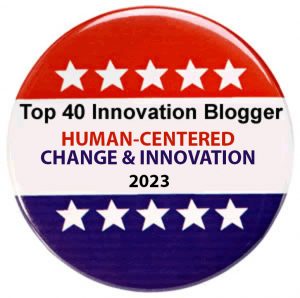 After a week of torrid voting and much passionate support, along with a lot of gut-wrenching consideration and jostling during the judging round, I am proud to announce your Top 40 Innovation Bloggers of 2023:
After a week of torrid voting and much passionate support, along with a lot of gut-wrenching consideration and jostling during the judging round, I am proud to announce your Top 40 Innovation Bloggers of 2023:

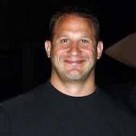 Greg Satell is a popular speaker and consultant. His first book,
Greg Satell is a popular speaker and consultant. His first book,  Mike Shipulski brings together people, culture, and tools to change engineering behavior. He writes daily on Twitter as
Mike Shipulski brings together people, culture, and tools to change engineering behavior. He writes daily on Twitter as 

 A twenty-five year Procter & Gamble veteran, Pete has spent the last 8+ years applying insights from psychology and behavioral science to innovation, product design, and brand communication. He spent 17 years as a serial innovator, creating novel products, perfume delivery systems, cleaning technologies, devices and many other consumer-centric innovations, resulting in well over 100 granted or published patents. Find him at pete.mindmatters@gmail.com
A twenty-five year Procter & Gamble veteran, Pete has spent the last 8+ years applying insights from psychology and behavioral science to innovation, product design, and brand communication. He spent 17 years as a serial innovator, creating novel products, perfume delivery systems, cleaning technologies, devices and many other consumer-centric innovations, resulting in well over 100 granted or published patents. Find him at pete.mindmatters@gmail.com



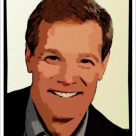



 Soren Kaplan is the bestselling and award-winning author of Leapfrogging and The Invisible Advantage, an affiliated professor at USC’s Center for Effective Organizations, a former corporate executive, and a co-founder of
Soren Kaplan is the bestselling and award-winning author of Leapfrogging and The Invisible Advantage, an affiliated professor at USC’s Center for Effective Organizations, a former corporate executive, and a co-founder of 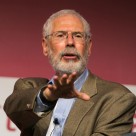
 Diana heads marketing at
Diana heads marketing at 
 Dainora (a.k.a. Dee) creates customer-centric content at Viima. Viima is the most widely used and highest rated innovation management software in the world. Passionate about environmental issues, Dee writes about sustainable innovation hoping to save the world – one article at the time.
Dainora (a.k.a. Dee) creates customer-centric content at Viima. Viima is the most widely used and highest rated innovation management software in the world. Passionate about environmental issues, Dee writes about sustainable innovation hoping to save the world – one article at the time.
 Arlen Meyers, MD, MBA is an emeritus professor at the University of Colorado School of Medicine, an instructor at the University of Colorado-Denver Business School and cofounding President and CEO of the Society of Physician Entrepreneurs at
Arlen Meyers, MD, MBA is an emeritus professor at the University of Colorado School of Medicine, an instructor at the University of Colorado-Denver Business School and cofounding President and CEO of the Society of Physician Entrepreneurs at 
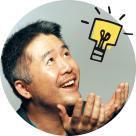 Leo is the founder of
Leo is the founder of  Rachel Audige is an Innovation Architect who helps organisations embed inventive thinking as well as a certified Systematic Inventive Thinking Facilitator, based in Melbourne.
Rachel Audige is an Innovation Architect who helps organisations embed inventive thinking as well as a certified Systematic Inventive Thinking Facilitator, based in Melbourne. Art Inteligencia is the lead futurist at Inteligencia Ltd. He is passionate about content creation and thinks about it as more science than art. Art travels the world at the speed of light, over mountains and under oceans. His favorite numbers are one and zero.
Art Inteligencia is the lead futurist at Inteligencia Ltd. He is passionate about content creation and thinks about it as more science than art. Art travels the world at the speed of light, over mountains and under oceans. His favorite numbers are one and zero.
 Phil McKinney is the Author of “Beyond The Obvious”, Host of the Killer Innovations Podcast and Syndicated Radio Show, a Keynote Speaker, President & CEO CableLabs and an Innovation Mentor and Coach.
Phil McKinney is the Author of “Beyond The Obvious”, Host of the Killer Innovations Podcast and Syndicated Radio Show, a Keynote Speaker, President & CEO CableLabs and an Innovation Mentor and Coach. Dr. Ralph-Christian Ohr has extensive experience in product/innovation management for international technology-based companies. His particular interest is targeted at the intersection of organizational and human innovation capabilities. You can follow him on Twitter
Dr. Ralph-Christian Ohr has extensive experience in product/innovation management for international technology-based companies. His particular interest is targeted at the intersection of organizational and human innovation capabilities. You can follow him on Twitter 
 Dr. Dean Anderson and Dr. Linda Ackerman Anderson lead
Dr. Dean Anderson and Dr. Linda Ackerman Anderson lead 

 Scott Anthony is a strategic advisor, writer and speaker on topics of growth and innovation. He has been based in Singapore since 2010, and currently serves at the Managing Director of Innosight’s Asia-Pacific operations.
Scott Anthony is a strategic advisor, writer and speaker on topics of growth and innovation. He has been based in Singapore since 2010, and currently serves at the Managing Director of Innosight’s Asia-Pacific operations.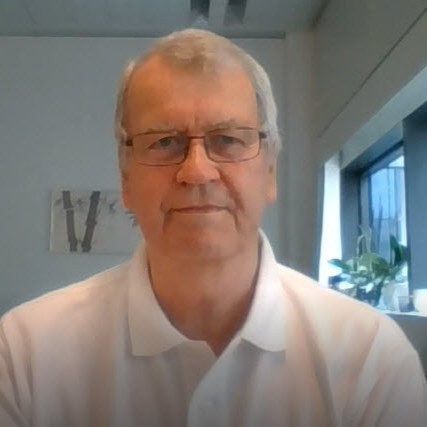 Paul Hobcraft runs
Paul Hobcraft runs 
 Chateau G Pato is a senior futurist at Inteligencia Ltd. She is passionate about content creation and thinks about it as more science than art. Chateau travels the world at the speed of light, over mountains and under oceans. Her favorite numbers are one and zero.
Chateau G Pato is a senior futurist at Inteligencia Ltd. She is passionate about content creation and thinks about it as more science than art. Chateau travels the world at the speed of light, over mountains and under oceans. Her favorite numbers are one and zero. Jesse Nieminen is the Co-founder and Chairman at
Jesse Nieminen is the Co-founder and Chairman at  As an experience architect, Alain helps leaders craft customer, employee and shareholder experiences for profit, reinvention and transformation. He does this through his personal consultancy Alain Thys & Co as well as the transformative venture studio
As an experience architect, Alain helps leaders craft customer, employee and shareholder experiences for profit, reinvention and transformation. He does this through his personal consultancy Alain Thys & Co as well as the transformative venture studio 

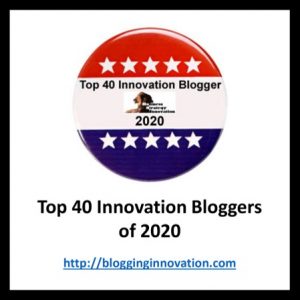
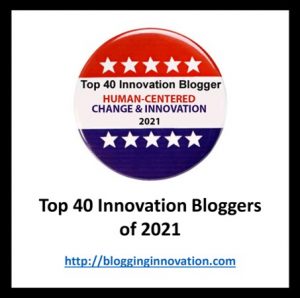
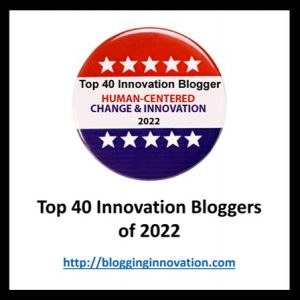
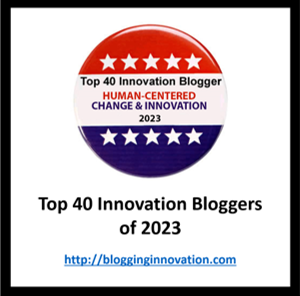
 Happy Holidays!
Happy Holidays!
 Human-Centered Change and Innovation loves making innovation insights accessible for the greater good, because we truly believe that the better our organizations get at delivering value to their stakeholders the less waste of natural resources and human resources there will be.
Human-Centered Change and Innovation loves making innovation insights accessible for the greater good, because we truly believe that the better our organizations get at delivering value to their stakeholders the less waste of natural resources and human resources there will be.
